Nissan X-Trail vs SsangYong Rexton – Performance, range & efficiency compared
Both models have their strengths – but which one suits you more?
Compare performance, efficiency, price and space directly: Nissan X-Trail or SsangYong Rexton?
Here’s where it gets real: The technical differences in detail
Costs and Efficiency: When it comes to price and running costs, the biggest differences usually appear. This is often where you see which car fits your budget better in the long run.
Nissan X-Trail has a evident advantage in terms of price – it starts at 34000 £, while the SsangYong Rexton costs 41100 £. That’s a price difference of around 7106 £.
Fuel consumption also shows a difference: the Nissan X-Trail manages with 5.70 L and is therefore decisively more efficient than the SsangYong Rexton with 8.20 L. The difference is about 2.50 L per 100 km.
Engine and Performance: Under the bonnet, it becomes clear which model is tuned for sportiness and which one takes the lead when you hit the accelerator.
When it comes to engine power, the Nissan X-Trail has a hardly perceptible edge – offering 213 HP compared to 202 HP. That’s roughly 11 HP more horsepower.
In acceleration from 0 to 100 km/h, the Nissan X-Trail is convincingly quicker – completing the sprint in 7 s, while the SsangYong Rexton takes 10.60 s. That’s about 3.60 s faster.
In terms of top speed, the Nissan X-Trail performs minimal better – reaching 200 km/h, while the SsangYong Rexton tops out at 184 km/h. The difference is around 16 km/h.
There’s also a difference in torque: the Nissan X-Trail pulls a bit stronger with 525 Nm compared to 441 Nm. That’s about 84 Nm difference.
Space and Everyday Use: Cabin size, boot volume and payload all play a role in everyday practicality. Here, comfort and flexibility make the difference.
Both vehicles offer seating for 7 people.
In curb weight, the Nissan X-Trail is clearly perceptible lighter – 1668 kg compared to 2145 kg. The difference is around 477 kg.
In terms of boot space, the SsangYong Rexton offers noticeable more room – 784 L compared to 585 L. That’s a difference of about 199 L.
In maximum load capacity, the SsangYong Rexton performs noticeable better – up to 1977 L, which is about 553 L more than the Nissan X-Trail.
When it comes to payload, SsangYong Rexton clearly perceptible takes the win – 770 kg compared to 574 kg. That’s a difference of about 196 kg.
All in all, the Nissan X-Trail shows itself to be outperforms in nearly all aspects and secures the title of DriveDuel Champion.
It impresses with the more balanced overall package and proves to be the more versatile companion for everyday use.
Nissan X-Trail
The Nissan X-Trail stands out with its spacious interior and practical design, making it an ideal choice for families and adventure enthusiasts alike. Its sleek exterior styling is complemented by modern technology features that enhance both driving pleasure and safety. This versatile SUV offers a comfortable ride, whether navigating city streets or exploring off-road paths, ensuring you travel in style and comfort.
details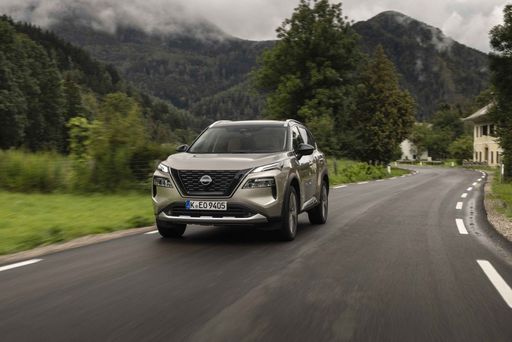 @ germany.nissannews.com
@ germany.nissannews.com
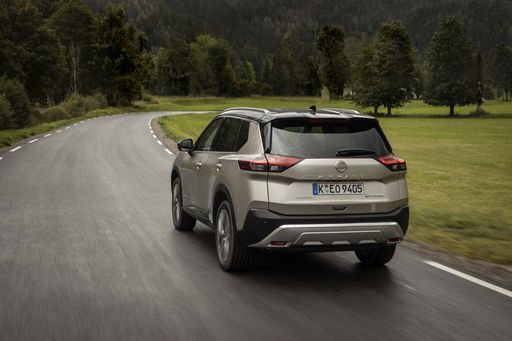 @ germany.nissannews.com
@ germany.nissannews.com
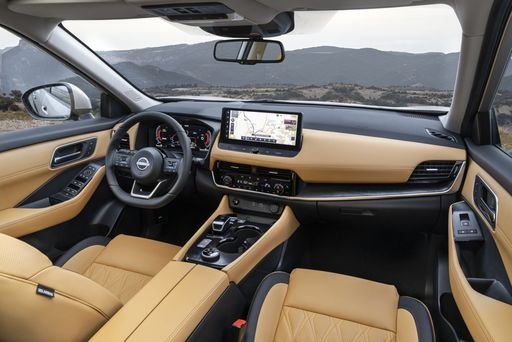 @ germany.nissannews.com
@ germany.nissannews.com
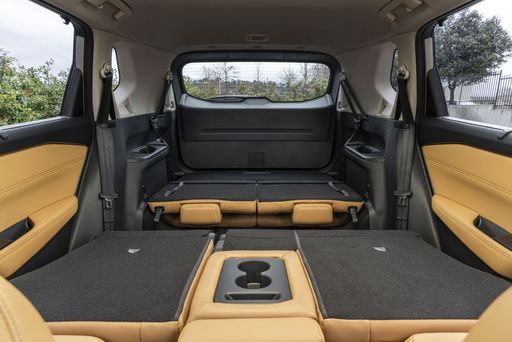 @ germany.nissannews.com
@ germany.nissannews.com
SsangYong Rexton
The SsangYong Rexton stands out in the SUV segment with its robust design and commanding presence on the road. It offers a spacious interior with high-quality materials, providing comfort and practicality for both driver and passengers. The Rexton combines off-road capability with modern technology, making it an attractive option for those seeking a versatile and durable vehicle.
details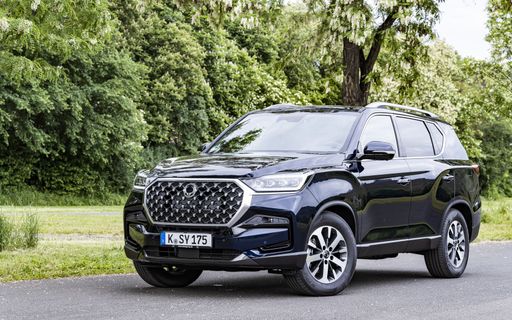 @ Ssangyong
@ Ssangyong
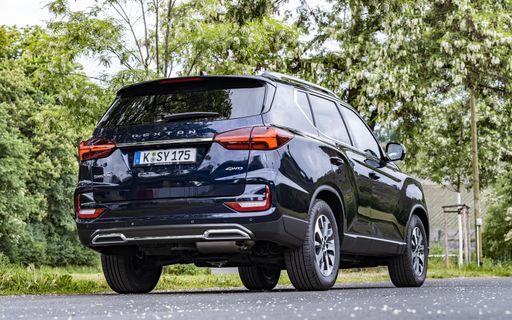 @ Ssangyong
@ Ssangyong
 @ Ssangyong
@ Ssangyong
 @ Ssangyong
@ Ssangyong
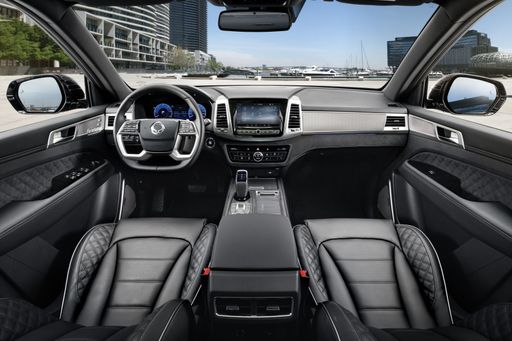 @ Ssangyong
@ Ssangyong

|

|
|
|
|
Costs and Consumption |
|
|---|---|
|
Price
34000 - 50400 £
|
Price
41100 - 51300 £
|
|
Consumption L/100km
5.7 - 6.9 L
|
Consumption L/100km
8.20 L
|
|
Consumption kWh/100km
-
|
Consumption kWh/100km
-
|
|
Electric Range
-
|
Electric Range
-
|
|
Battery Capacity
-
|
Battery Capacity
-
|
|
co2
131 - 161 g/km
|
co2
214 - 216 g/km
|
|
Fuel tank capacity
55 L
|
Fuel tank capacity
70 L
|
Dimensions and Body |
|
|---|---|
|
Body Type
SUV
|
Body Type
Off-Roader
|
|
Seats
5 - 7
|
Seats
5 - 7
|
|
Doors
5
|
Doors
5
|
|
Curb weight
1668 - 1961 kg
|
Curb weight
2145 - 2180 kg
|
|
Trunk capacity
177 - 585 L
|
Trunk capacity
236 - 784 L
|
|
Length
4680 mm
|
Length
4850 mm
|
|
Width
1840 mm
|
Width
1960 mm
|
|
Height
1720 mm
|
Height
1825 mm
|
|
Max trunk capacity
1396 - 1424 L
|
Max trunk capacity
1806 - 1977 L
|
|
Payload
432 - 574 kg
|
Payload
655 - 770 kg
|
Engine and Performance |
|
|---|---|
|
Engine Type
Petrol MHEV, Full Hybrid
|
Engine Type
Diesel
|
|
Transmission
Automatic
|
Transmission
Automatic
|
|
Transmission Detail
CVT, Reduction Gearbox
|
Transmission Detail
Automatic Gearbox
|
|
Drive Type
Front-Wheel Drive, All-Wheel Drive
|
Drive Type
All-Wheel Drive
|
|
Power HP
163 - 213 HP
|
Power HP
202 HP
|
|
Acceleration 0-100km/h
7 - 9.6 s
|
Acceleration 0-100km/h
10.60 s
|
|
Max Speed
170 - 200 km/h
|
Max Speed
184 km/h
|
|
Torque
300 - 525 Nm
|
Torque
441 Nm
|
|
Number of Cylinders
3
|
Number of Cylinders
4
|
|
Power kW
120 - 157 kW
|
Power kW
148 kW
|
|
Engine capacity
1497 cm3
|
Engine capacity
2157 cm3
|
General |
|
|---|---|
|
Model Year
2024
|
Model Year
2021 - 2023
|
|
CO2 Efficiency Class
F, D, E
|
CO2 Efficiency Class
G
|
|
Brand
Nissan
|
Brand
SsangYong
|
Is the Nissan X-Trail offered with different drivetrains?
The Nissan X-Trail is offered with Front-Wheel Drive or All-Wheel Drive.
The prices and data displayed are estimates based on German list prices and may vary by country. This information is not legally binding.
